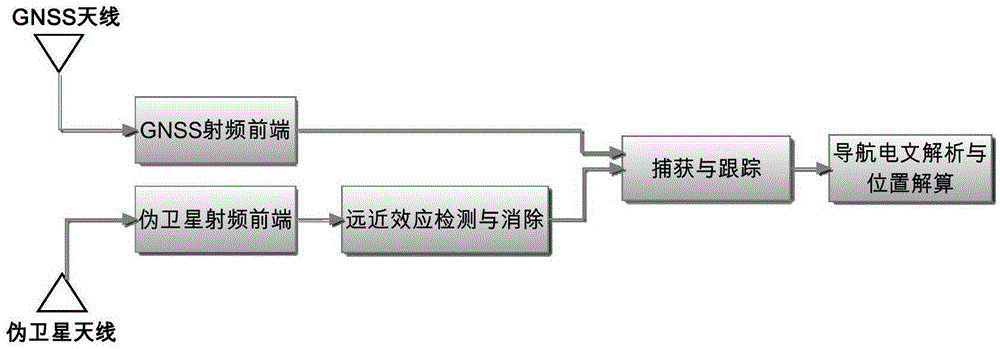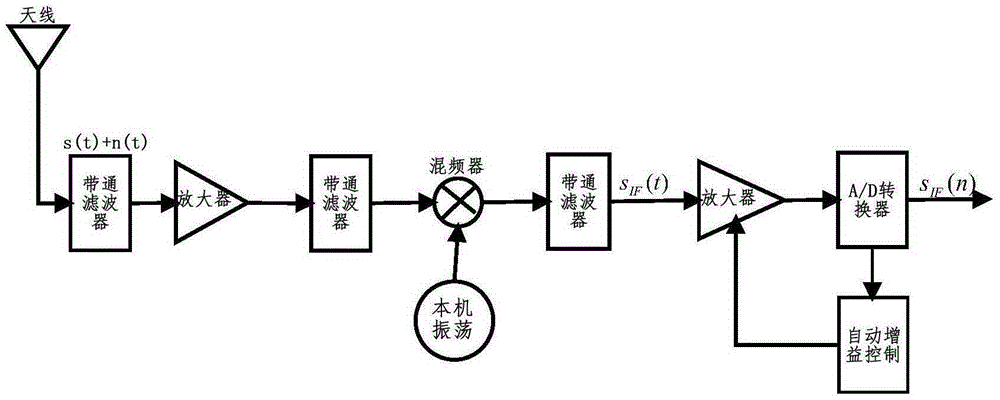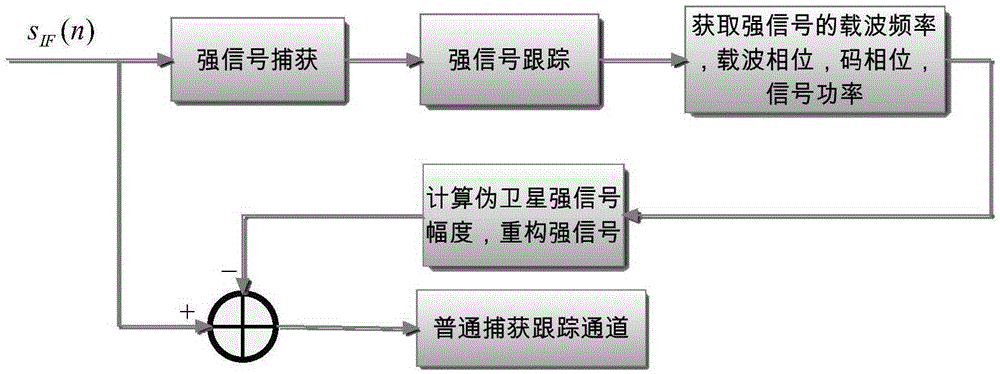Method for overcoming near-far effect by utilizing double antennas in pseudo-satellite ground-based augmentation system
A ground-based augmentation system and near-far effect technology, which is applied in satellite radio beacon positioning systems, radio wave measurement systems, and measurement devices, can solve problems such as low average power average power, blocking interference, and receiving and processing interference, and achieve improved Usability, effects of improving robustness
- Summary
- Abstract
- Description
- Claims
- Application Information
AI Technical Summary
Problems solved by technology
Method used
Image
Examples
Embodiment Construction
[0020] The embodiments will be described in detail below in conjunction with the accompanying drawings.
[0021] The overall structure of the method mainly includes RF front-end, near-far effect detection and elimination, intermediate frequency signal capture and tracking, navigation message analysis and user position calculation, see figure 1 . In order to overcome the huge difference in the power of GNSS satellites and pseudolites, the present invention uses independent radio frequency front-ends to process GNSS satellite signals and pseudolites signals respectively, and uses dual antenna technology to place two antennas on the upper and lower ends of the aircraft respectively. The shielding effect on the signal itself, the GNSS satellite signal and the pseudolite signal are respectively received from the upper and lower spaces, so that the interference effect of the pseudolite on the GNSS satellite signal is overcome from the space. According to the characteristics of grou...
PUM
 Login to View More
Login to View More Abstract
Description
Claims
Application Information
 Login to View More
Login to View More - Generate Ideas
- Intellectual Property
- Life Sciences
- Materials
- Tech Scout
- Unparalleled Data Quality
- Higher Quality Content
- 60% Fewer Hallucinations
Browse by: Latest US Patents, China's latest patents, Technical Efficacy Thesaurus, Application Domain, Technology Topic, Popular Technical Reports.
© 2025 PatSnap. All rights reserved.Legal|Privacy policy|Modern Slavery Act Transparency Statement|Sitemap|About US| Contact US: help@patsnap.com



